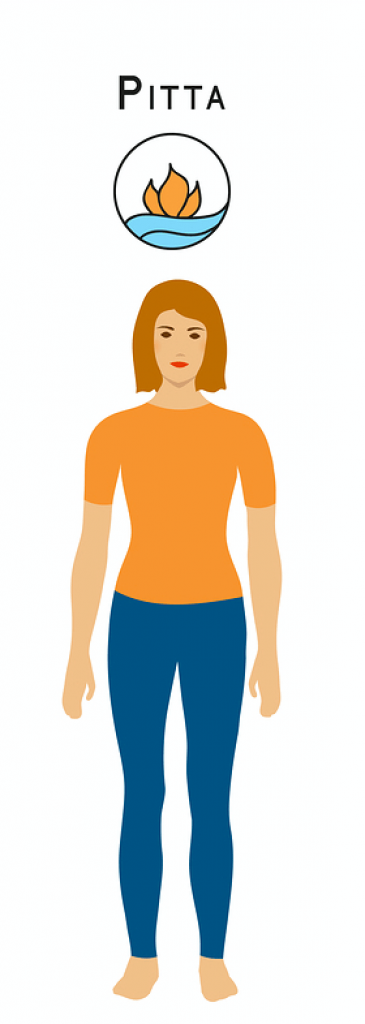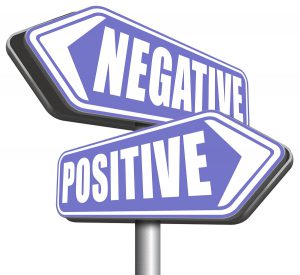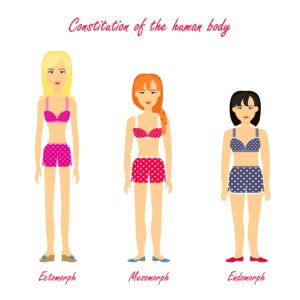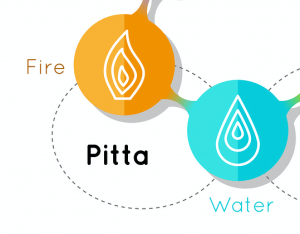 What do Hillary Clinton, Nicole Kidman and Julianne Moore all have in common? Well, they are all bright, super ambitious, leaders, and have muscular, athletic bodies. These are characteristics of people who have a Pitta dominant constitution. So what is Pitta?
What do Hillary Clinton, Nicole Kidman and Julianne Moore all have in common? Well, they are all bright, super ambitious, leaders, and have muscular, athletic bodies. These are characteristics of people who have a Pitta dominant constitution. So what is Pitta?
Ayurveda gives an explanation for this. Pitta is one of the three doshas. The other two are Vata and Kapha.
The five elements – Ether, Air, Fire, Water, and Earth – mix with each other in different proportions, to form the 3 Doshas. In simple words, these Doshas are responsible for our physical and mental activities.
In this article, we take a look at Pitta Dosha and help you discover if you fall into this body/mind type.
What is Pitta Dosha?
Pitta dosha is the qualities of the elements fire and water. The quality of Pitta is mostly heat. Heat is responsible for temperature, metabolism, and transformation in the mind and body.
If you have a Pitta body/mind type, you will have the following physical and mental qualities:
- Sharp
- Light
- Hot
- Oily
- Moving
- Liquid
- Acidic
Pitta dosha is responsible for:
- Digestion, absorption, and assimilation
- Metabolism
- Body temperature regulation
- Thirst and appetite
- Vision
- Coloring
- Perception, cognition, and understanding
Are You Pitta-dominant?
If you are Pitta dominant, you'll have a medium built, be well proportioned, and have a balanced weight. While most Pitta types tend to have red hair, they are also prone to thin and premature graying.
The theme of the Pitta type is “intense.” A balanced Pitta enjoys excellent digestion and sound sleep. They have a high sex drive.
It's important to know both the positive and negative aspects of the Doshas. The positive will give you superpowers. The negative will make you unwell.
The balanced side of Pitta will have:
- Medium height and weight with a medium frame
- Silk, thin hair
- Healthy digestion
- Lustrous skin with less tendency to wrinkle
- Sound sleep
- Excellent sex drive
- Active concentration and sharp intellect
Pitta Imbalances look like this:
- Inflammation
- Hot flashes
- Skin Rashes
- Disorders of the small intestine and stomach
- Heartburn
- Liver disorders
- Canker sores
- Hemorrhoids
- Bloodshot eyes
- Hepatitis
- Infections
- Overall intolerance to heat (especially hot and humid)
*note they are all heated conditions
Physical Characteristics of Pitta
If you are a Pitta type, you are a mesomorph. Since these body types enjoy a good metabolism, they gain and lose weight with ease.
Pitta's prefer cool weather. Pitta types are often red-heads, fair skinned with freckles. They sunburn easily.
Other physical features include:
- Medium height with medium body frame
- Somewhat developed muscles and chest
- Gray, green, or copper brown eyes
- Sharp eyes
- Fair, yellowish, coppery, or red complexion
- Warm, soft skin with fewer wrinkles
- Thin, silky hair
- Red to brownish red hair

- Soft nails
- Sharp, prominent nose
- Reddish lips
- Yellowish feces
- Large quantity of urine
- Excess perspiration
- Excellent digestion
- Healthy appetite, cannot skip meals
Famous Pitta Types
Julianne Moore, Conan O'Brian, and Nicole Kidman are Pitta types.
Psychological Characteristics of Pitta
- Intelligent
- Sharp
- Witty
- Good comprehension
- Ambitious
- Natural leaders
- Sharp memory
- Strong sense of discernment
- Clear visual perceptions
- Able to focus well
Emotional Characteristics of Pitta
When stress, Pitta tends to be
- Easily irritated
- Angry
- Jealousy
- Aggressive
- Pretty selective, but creates warm friendships
- Make both friends and enemies fast
- Tendency to hate (when out-of-balance)
- Could be vindictive
- Could be destructive
Signs of Pitta Dosha out of balance:
- Early graying and/or baldness
- Excessive body heat with a sharp smell (they often smell like sour milk)
- Skin rashes
- Digestive troubles
- Urinary infections
- Short-tempered
- Argumentative
- Persuasive communication
- Precise, sharp-witted
- Outspoken, natural leaders
Ways Pitta Becomes Imbalanced
Pitta tends to go out-of-balance from:
- Eating spicy, hot, fiery foods
- Consuming fried foods
- Eating while angry
- Eating sour or fermented foods
- Drinking caffeine drinks
- Drinking alcohol
- Smoking cigarettes
- Prolonged fasting
- Overworking
- Being overly competitive
- Exposure to chemicals, toxins, or allergens
Common Body Symptoms
Some of the common body symptoms that reflect Pitta imbalance include;
- Excessive body heat
- Indigestion
- Heartburns and acid reflux
- Gastritis and peptic ulcers
- Oral sores
- Recurrent fever
- Diarrhea or constipation
- Acute inflammation
- Anemia
- Bad breath
- Discomfort on skipping meals
- Bad body odor due to excessive perspiration
- Skin breakouts such as acne and eczema
- Greenish feces
- Low blood sugar
- Inflammation in the stomach
- Esophageal inflammation
- Extreme sun sensitivity
- Bleeding tendencies
- Hemorrhoids
- Hemorrhage
- Jaundice
- Blood clots
- Stroke
- Shingles
- Inflammatory arthritis
- Hyperthyroidism
- Adrenal exhaustion
- Epididymis
- Endometriosis and other reproductive issues
Pitta Balancing Diet
To balance Pitta, you should do things in moderation. The RX for Pitta types is to stay cool, calm and relaxed.
Balancing Pitta with Diet and Lifestyle
Consume
- Cool foods
- Lightly cooked foods
- Dense, grounding, and nourishing foods
- Cooling spices like mint, fennel, basil, coriander, dill, parsley, and turmeric
- Bitter spices like neem leaves and cumin
- Milk, root vegetables, and seeds
- Dry, dense foods
- Foods like grains and fruits that are sweet by nature
- Bitter foods like kale, dandelion greens, and collard greens
- Legumes like black-eyed peas, chick peas, kidney beans, and lentils
- Ghee
Reduce
- Spicy, hot foods
- Heating spices
- Light, dry foods
- Caffeine
- Fermented foods
- Hard and sour cheese
- Processed and canned foods
- Alcohol
- Sour cream
- Fruits like pineapple and grapefruit
- Salt
- Refined flour and sugar
Ayurvedic Herbs
These spices are cooling by nature. Hence, it helps to prevent a surge in Pitta levels. These herbs also help to prevent and ease digestive issues.
Here's a list of common Pitta pacifying herbs:
General Guidelines for Balanced Lifestyle
Following these guidelines will help to balance Pitta:
- Aim to rise before the sun.
- Establish a daily routine with regular times for waking, eating, exercising, working, and sleeping.
- Cleanse your tongue.
- Brush your teeth.
- Drink 350 ml water at room temperature.
- Include a moderate exercise regimen.
- Do a self-massage with coconut oil or sunflower oil for 15 minutes before bathing.
- Keep yourself cool.
- Go to bed by 10 pm.
- Take a bath in cool water.
- Meditate regularly.
- Listen to calm, soothing music.
- Take breaks, if necessary.
- Practice stress management techniques like Tai Chi or Yin Yoga.
- Wear cooling and soothing colors like Blue and White.
- Avoid exercising during peak times of the day.
- Avoid sun baths.
Yoga for Pitta Types
Gentle yoga practices such as Restorative Yoga and Yin Yoga are ideal for Pitta dominated people. It is also advisable to practice Ujjayi and Sheetakari/Sitali Pranayama daily to keep you cool and calm.
Refrain from indulging in highly strenuous and stressful exercising such as Power and Ashtanga Yoga. Going to the gym and lifting heavy weights are also not favorable for Pitta.
Soothing the mind by indulging in creative, fun-filled activities that require planning could energize and balance Pitta.
Conclusion
Pitta, in general, is smart, sharp, and self-driven. They are quite ambitious and can woo you with their talk. But, remember, when Pitta suffers an imbalance, they can become your worst enemies.
At the end of the day, it is all about balance. A calming, grounding and cooling regimen is what will benefit a Pitta.
Pitta is hot, dry, unstable and light. Pitta is intense and fiery! So, keep it cool and stable with Pitta pacifying food, lifestyle, and meditation.
It is up to you to decide where to begin your journey, but it helps if you know what doshas are most dominant in your constitution.






There is so much about this subject of Ayurveda that I do not know about. There are so many schools of thought when it comes to analyzing people’s characters and personalities, and it may be confusing.
From what I’ve read in your article, I can relate to some of the characteristics of pitta dosha, but most of them are irrelevant to me. Is it possible for someone to be a combination of two different doshas?
Thanks and great article!
Hello Faran,
Everyone has all 3 Doshas. They are the building blocks of the body, but most people have dual doshas.
See if you can relate to Kapha: https://motherofhealth.com/what-is-kapha-dosha-are-… or
Vata https://motherofhealth.com/what-is-vata-dosha
I also recommend taking the Dosha test inside the post.
Please let me know if I can help or if you have questions.
Take care, Jackie
A very interesting article. I’d never heard of these body types and dosha before. According to the specifications about Pitta I’m definitely not one of those LOL! I’m going to do the dosha test now though cause it’s really interesting and then I can see what I am and what can help me.
Hi Hannah,
See if you relate to Kapha: https://motherofhealth.com/what-is-kapha-dosha-are-…
Or Vata https://motherofhealth.com/what-is-vata-dosha
Let me know if I can help?
hi Jackie, this is very interesting. A good friend of mine is into ayurveda and i too find it fascinating but have not explored it that much yet. How did you learn all this information? Is there any science to back up the philosophies of ayurveda or is it like horiscopes? i will have to try the test to see what type i am. great reading thanks, keep it up
Hi Brad,
I went to the California College of Ayurveda in Grass Valley California. Here’s another post that explains the Roots of Ayurveda. https://motherofhealth.com/roots-ayurveda.
My best,
Jackie
This was a damn informative post and I was seriously unaware of it all. I didn’t even know what this Pitta is until I read your post.
It seems to be a really powerful thing that every human being possess and can use for his/her own welfare with right information and complete knowledge.
Reading your post, almost all of the characteristics of Pitta matches with me and lol I wasn’t even aware about it.
This was really informative and really new thing for me. Thanks a lot for the post and for such detailed information.
Happy to introduce you to the VPK concepts! If ever you get out-of-balance, you’ll know where to come to get back on track! 🙂 Thanks for commenting and my best to you!
Information was quite useful, thank you writer
I’m from india and I know a lot about ayurveda things because it is in our daily routine. There is a lot to know, well for this article I want to say that a person can have mixed doshas too, like vatt-pitta , pitta-kapha or vatta-kapha.